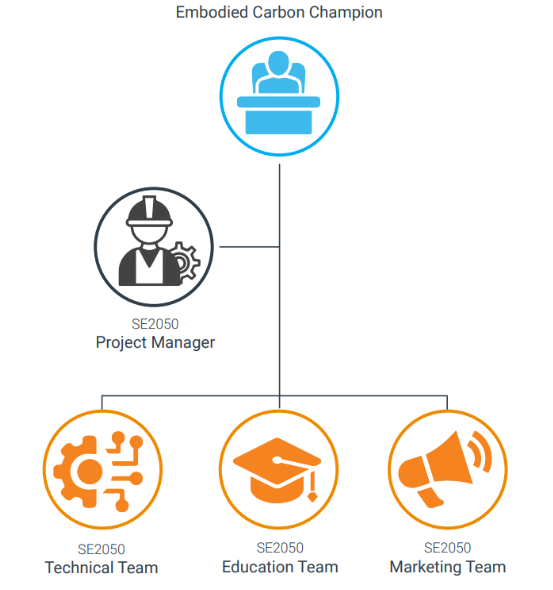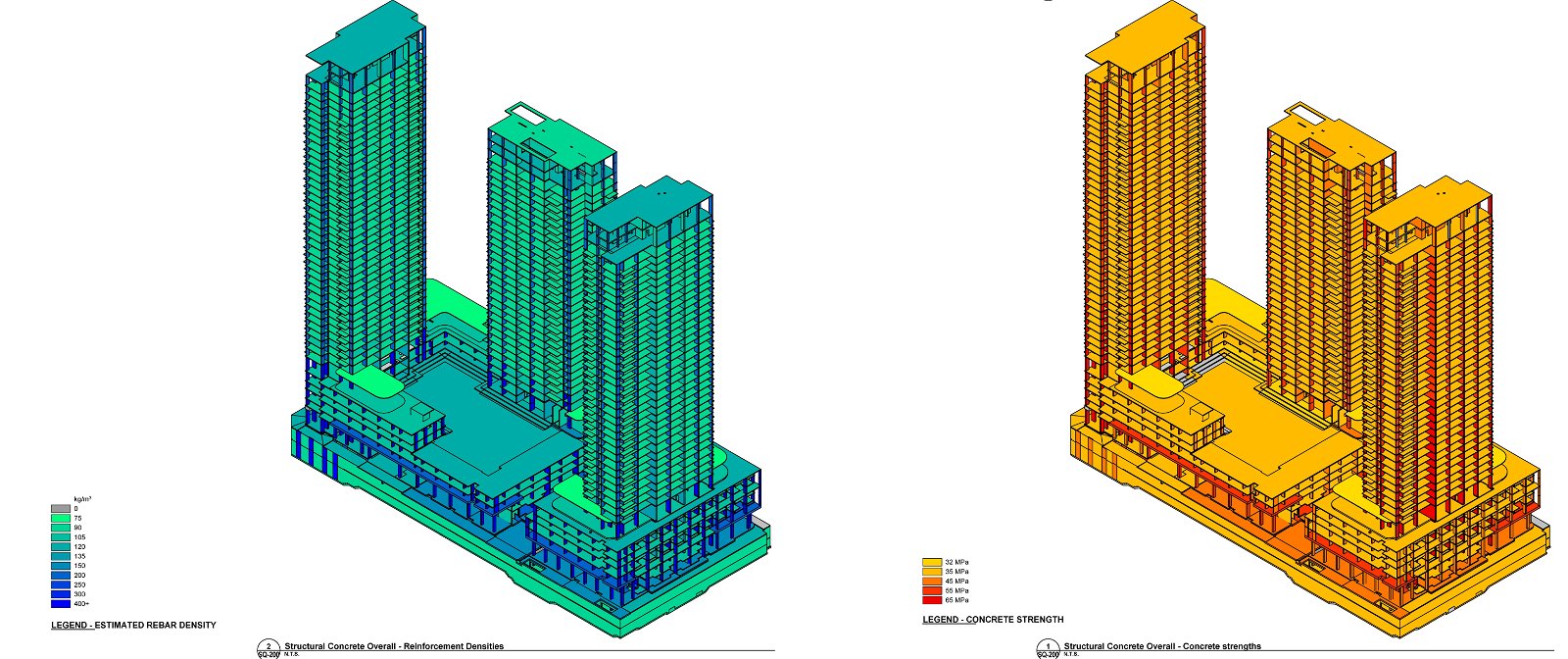Embodied Carbon in Structures: Insights, Solutions & RJC's Commitment
- Details

In sustainable building construction, a critical factor often goes unnoticed: embodied carbon. Let's explore the significance of this silent emissions contributor and understand why it's crucial for global climate goals.
What is Embodied Carbon?
Embodied carbon refers to the carbon emissions produced during the life cycle of building materials, from raw material extraction to manufacturing, transport, installation, and end of life. Most of these emissions occur before a building is even in use.
The Foundation: A Toronto-Based Case Study
The insights and perspectives shared throughout this article are rooted in the comprehensive study titled, "Embodied Carbon in Residential Structures: A Toronto Based Case Study", which was jointly conducted by RJC Engineers and BDP Quadrangle, dated Sept 12, 2023.
This research underscores the environmental significance of embodied carbon, especially during the manufacturing and construction phases of buildings. For a deeper dive into the study's findings, we recommend exploring the full publication linked above.
Often Overlooked: The Impact of Embodied Carbon
While operational emissions from buildings in use have been the primary concern for decades, the industry is shifting focus toward this often-neglected contributor.
The reason for this shift in attention is twofold. Firstly, as building designs become more energy-efficient, and fuel is switched to cleaner energy sources, the relative contribution of embodied carbon to the total carbon footprint of a building increases. Secondly, the immediacy of the emissions from building materials—released during extraction, production, and construction phases—means they have an immediate impact on our environment, even before a building is operational. Recognizing and addressing embodied carbon, therefore, becomes essential in achieving true sustainability in the built environment.
Why Embodied Carbon Matters Now
With the International Energy Agency reporting that buildings and their construction account for 36% of global energy use and 39% of energy-related carbon dioxide emissions, it's clear that the building sector plays a pivotal role in the global carbon emissions landscape.
So why is this the case? Here are some critical aspects to consider:
- Rapid Urbanization: By 2060, two-thirds of the predicted 10 billion global population will live in cities. This urban boom translates to massive construction activities.
- Material Impact: Certain materials like concrete, steel, and aluminum have high embodied carbon footprints. For instance, the production of cement, a primary ingredient in concrete, is responsible for 8% of the world's CO2 emissions.

The Building Sector's Carbon Footprint
Architecture 2030 and many industry experts have highlighted that the built environment contributes a staggering 40% to global CO2 emissions annually. Out of this, building operations account for 27%, with embodied carbon following closely at 13% and rising. While operational emissions from power usage have been the focal point for years, embodied carbon from construction materials has recently gained attention as a significant part of this footprint.
Significance Of Emissions in the Building Industry: A Summary
- Buildings alone are responsible for nearly 40% of the global energy consumption.
- Around 30% of the total CO2 emissions are attributed to buildings.
- As the world's urban population grows, so will the demand for new buildings, thereby increasing the potential for embodied carbon emissions.
Materials with High Embodied Carbon
- Concrete: Often used in construction, its production emits a large amount of CO2.
- Steel: While recyclable, its initial production is carbon-intensive.
- Aluminum: High energy requirements for production result in significant carbon emissions.
Reducing Embodied Carbon: What Can Be Done?
In the quest to combat embodied carbon, every segment of society must come together and play its part.
Industry Initiatives
The Structural Engineers 2050 Commitment Program (SE2050) is an industry-wide response. The commitment is clear: achieve net zero carbon structures by 2050. RJC is proud to be a signatory of this program.
Highlights include:
- Accountable Engagement: The program isn't just about commitment but about active engagement on projects and sharing insights, which is crucial for collective progress.
- Intensive Data Representation: The program offers embodied carbon intensity diagrams. These visual aids help firms compare their structural material quantities and embodied carbon intensities against an established baseline, fostering a competitive spirit for betterment.
- Growing Momentum: Numerous companies, including RJC, have taken the pledge, indicating a growing industry consensus and commitment toward this goal.
Below, we share other methods engineers and structural designers can implement to tackle the embodied carbon challenge:
Life Cycle Assessments (LCA)
An LCA is a method used to evaluate the environmental impacts of products, materials, and services. By understanding these impacts, it's possible to make more informed, sustainable choices.
LCAs provide a comprehensive overview of the environmental impacts of materials and products. With such data, decisions can be more aligned with sustainability goals.
Sustainable Material Choices
Beyond LCAs, a conscious shift towards materials with a lower carbon footprint can make a considerable difference.
I.e.:
- Opting for materials with lower carbon footprints.
- Making use of recycled or upcycled materials.
- Implementing innovative construction methods to minimize waste.
Innovations in Construction
New methods, such as modular and prefabricated construction, can reduce waste and the overall carbon footprint of a project.
Policymaker Initiatives for Embodied Carbon Reduction
Governments and policymakers hold the power to shape the future of sustainable construction through regulations, incentives, and targets. Here are just some of the ways all levels of government can make change happen:
- Setting embodied and operational carbon targets to signify the issue's importance.
- Reviewing building requirements to minimize embodied carbon impacts.
- Shortening the approval process for sustainable projects to expedite green development.
- Rethinking financial incentives to prioritize low-carbon developments.
Developer Strategies for Carbon-Conscious Construction
Land developers play a pivotal role in determining a project's carbon footprint by setting goals and choosing sustainable materials and methods. Here's what can be done according to industry experts:
- Prioritizing the reuse of existing buildings over new constructions.
- Designing for extended building lifespans and future adaptability.
- Using lower carbon products and materials.
- Engaging in integrated design approaches for optimized construction.
- Implementing innovative construction techniques to reduce carbon intensity.
RJC Engineer's Commitment to Sustainable Building Practices
With over seven decades in the industry, RJC champions sustainability and innovation in construction while actively shaping a greener future.
Here's how RJC's dedicated strategies and practices align with industry initiatives and our drive toward sustainable construction.
SE2050: Joining the Industry's Commitment
RJC proudly aligns with the SE2050 Commitment Program mentioned above. This program, directed towards structural engineers and firms, aims for zero-carbon structures by 2050. As a signatory, RJC has promised not just to understand and reduce but to aim for net-zero carbon by the targeted year.
RJC's Embodied Carbon Action Plan (ECAP)
At the heart of RJC's commitment is our Embodied Carbon Action Plan. More than a roadmap, ECAP represents a proactive approach:
- Education Plan: RJC prioritizes professional development and internal training, ensuring all understand their commitment to SE2050.
- Knowledge Sharing Narrative: Through seminars, webinars, and conferences, RJC brings clients and partners into their carbon reduction journey.
- Reduction Strategy: RJC aims for net-zero designs by 2050, deploying tools, gathering design data, and setting clear benchmarks.
- Reporting Plan: With a focus on transparency, RJC accurately tracks embodied carbon, aligning with standards like SE2050.

The Embodied Carbon Team
This plan isn't just about reduction—it's about bringing forward innovative ideas and education to the wider industry. It details how RJC plans to leverage its strengths to decrease carbon emissions from projects creatively and practically.
Introducing RJC's In-House Revit Quantities Tools
The firm has developed the RJC Revit Quantities Tools, an innovative solution to calculate structural material quantities more efficiently. This tool simplifies a traditionally time-consuming and error-prone process. The quick and accurate data obtained is crucial for embodied carbon calculations.

Embodied Carbon Calculations for Materials
The data from the tool isn't just numerical—it can be presented graphically or in tables, offering clients and contractors clear insights into construction costs and embodied carbon measures.

Revit Quantities Visual Displays
Tool Overview
Traditional methods of computing quantities from Revit models have been labour-intensive and prone to inaccuracies. RJC has bridged this gap with:
- Precision and Speed: The tool allows for swift, high-quality data extraction.
- Accurate Data: With accurate data on structural materials, more precise embodied carbon calculations are possible.
- Versatility: Data can be showcased graphically or tabulated, aiding clients and contractors in making informed decisions.
Reach out to our team today to learn more about this effective materials calculator tool.
The Path Ahead: A Collaborative Effort
Embodied carbon, once an overlooked aspect of the construction industry, is now at the forefront of sustainable structural engineering. With companies like RJC leading with commitments and tangible tools, the path to net-zero carbon structures by 2050 becomes clearer and far less intimidating.
That said, the journey to net-zero carbon structures by 2050 is not just an RJC goal—it's a global imperative. With embodied carbon taking center stage, collaboration, innovation, and commitment from industry leaders and governments are the keys to a sustainable future.
Get Involved: Connect with RJC
Interested in diving deeper into embodied carbon or exploring how RJC's expertise can elevate your projects? For insights, collaborations, or tailored solutions, Reach out to our team today.